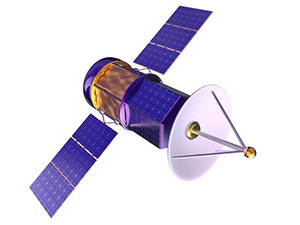
Sub-Saharan Africa has received a satellite connectivity boost after French-based company, Eutelsat, and Yahsat, an Abu Dhabi-based satellite operator, signed a multi-year capacity agreement giving Broadband for Africa access to high-performance commercial Ka-band capacity for broadband services.
Broadband for Africa is Eutelsat's African broadband venture which provides extensive satellite coverage of Sub-Saharan Africa.
According to the terms of the agreement, Broadband for Africa will use capacity on up to 16 Ka-band spot beams on the Yahsat 1B satellite in order to roll out broadband services during the first half of 2017.
Further expansion will be supported later in the year using capacity on 18 spot beams on Yahsat's Al Yah 3 satellite, scheduled for launch in early 2017. Both Yahsat 1B and Al Yah 3 are equipped with high power spot beams with Sub-Saharan African coverage, ideal for community and direct-to-user Internet access.
Amos-6 loss
For Eutelsat, this capacity will replace the payload previously contracted on the Amos-6 satellite which was lost in September following a launch pad explosion. The new deal will see Eutelsat revert to its initial business plan of a revenue contribution of EUR15 million in the 2017/18 financial year and EUR25 million to EUR30 million in 2018/19 in Africa.
"We are delighted to initiate this relationship with Yahsat and to put our Africa broadband programme back on track," says Laurent Grimaldi, CEO of Broadband for Africa. "We fully share Yahsat's conviction in the long-term role satellites will play in wireless connectivity and in the need for high-quality infrastructure to transform Africa's broadband landscape."
"We believe it is important for us to collaborate with our industry peers to drive our common goal of connecting individuals, businesses and governments around the world with affordable and reliable broadband services," says Amit Somani, chief strategy officer of Yahsat.
Facebook is geared towards providing free satellite Internet connections to large portions of Sub-Saharan Africa that previously had no network connection options. However, the initial satellite intended to beam connectivity to Africa was destroyed when the rocket (Falcon 9) carrying the satellite exploded on launch.
Grimaldi explains that satellite Yahsat 1B is already covering main countries such as SA and Nigeria, therefore the service to be launched by Broadband for Africa in 2017 will encompass such countries.
He points out that on a continent with more than 600 million inhabitants and a steady GDP growth of 7% per year, small enterprises and individuals in Africa increasingly need to be connected to the world with real broadband.
"No one disputes that the roll-out of fibre-optic cables in Africa is already improving the situation of hundreds of thousands of people by making high-speed Internet access a reality," Grimaldi notes.
"Fibre-optic infrastructure remains, however, limited when it comes to cover a continent which is 30 million square kilometres where half of the population lives in rural areas."
Network coverage
Mauritz Venter, ICT market research analyst at Frost & Sullivan, says satellite connectivity is only relevant in SA for the 4% of society who do not currently have access to 3G services provided by leading mobile network operators.
"It does enable an alternate form of connectivity for those who don't have access to fibre or DSL services, and prefer not to use 3G mobile connectivity."
According to Venter, today Vodacom boasts the most comprehensive network coverage in SA, providing basic coverage for 99.8% of the population, and 3G coverage for 96% of the population. MTN and Cell C follow closely behind with network coverage available to over 99% of the population.
"Although satellite connectivity is a service provided by Vox Telecoms, Vodacom and Telkom, it is geared towards less than 0.5% of the population and is, therefore, not an essential service for South African Internet service providers or mobile network operators.
"Satellite network provision is a great way to reach vast portions of society that are yet to be connected to the Internet, and the technology enabling this form of connectivity is advancing at a rapid rate. However, at this time it does not represent a viable form of income or connectivity solution for MNOs or ISPs in South Africa," Venter says.
Consistent service
For Tim Parle, BMI-TechKnowledge telecoms sector specialist, the benefit of satellite is being able to offer a consistent, predictable and replicable service across the country.
He notes that cost and latency are the usual complaints when it comes to satellite connectivity. "However, prices have dropped dramatically in the past few years. Also, we now have a fleet of medium Earth orbit satellites in service which are able to offer low latency services."
According to Parle, satellite technology has advanced with the development of high throughput satellites (HTS) - these utilise spot beam technology to provide focused services rather than having a massive antenna covering, for example, the whole of Sub-Saharan Africa. This allows for a massive increase in throughput allowing for much higher users speeds, he notes.
Richard Hurst, director of enterprise research at Africa Analysis, believes satellite connectivity will experience a new lease on life over the next two to three years as the technology develops to reach out to the more rural underserviced areas of the globe.
"Look at the HTS and new satellite services from Google and O3B which offer a fibre-like connectivity experience. Satellite services are playing a vital role in the delivery of communications services in the rural areas. However, as new satellites, with new technology go live in the very near future, we can expect to see satellite services playing an even greater role."
Share